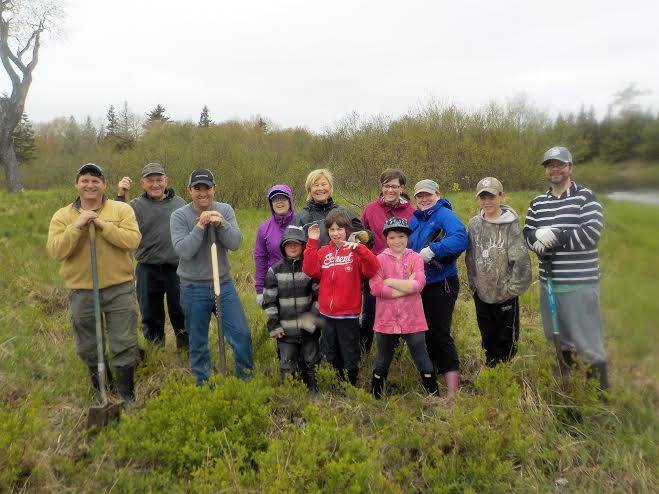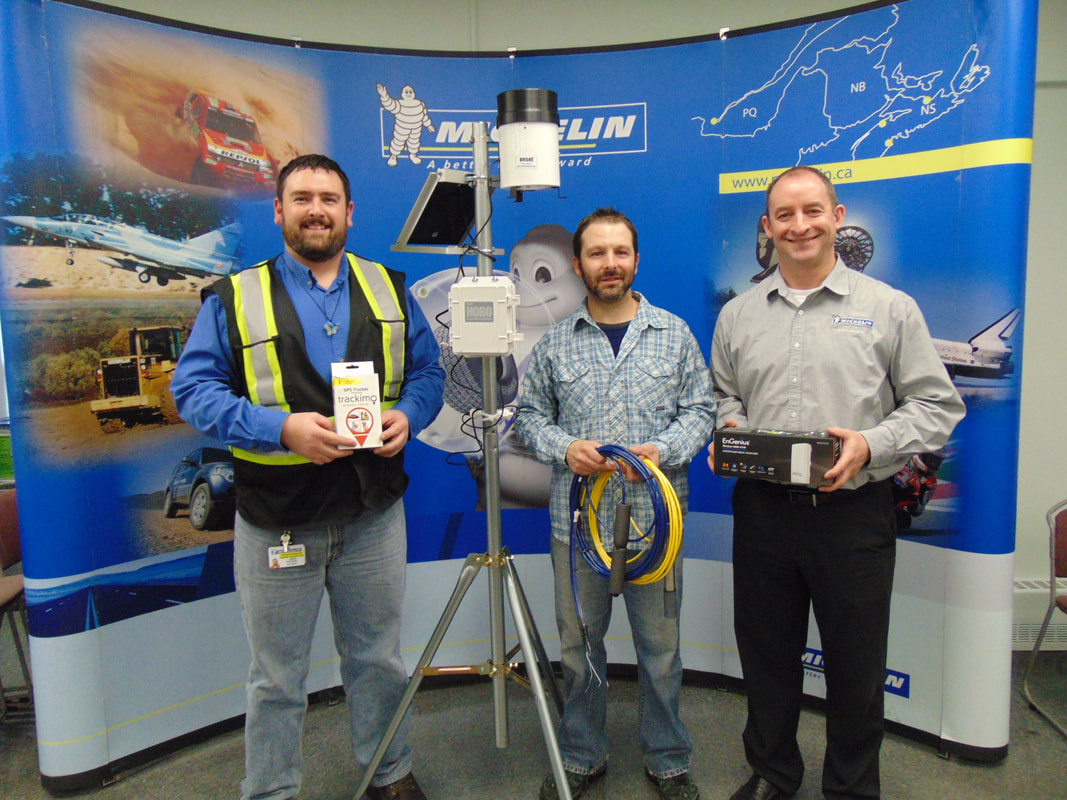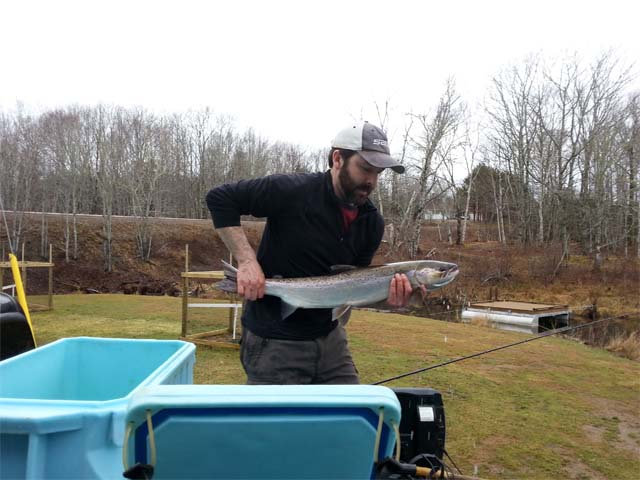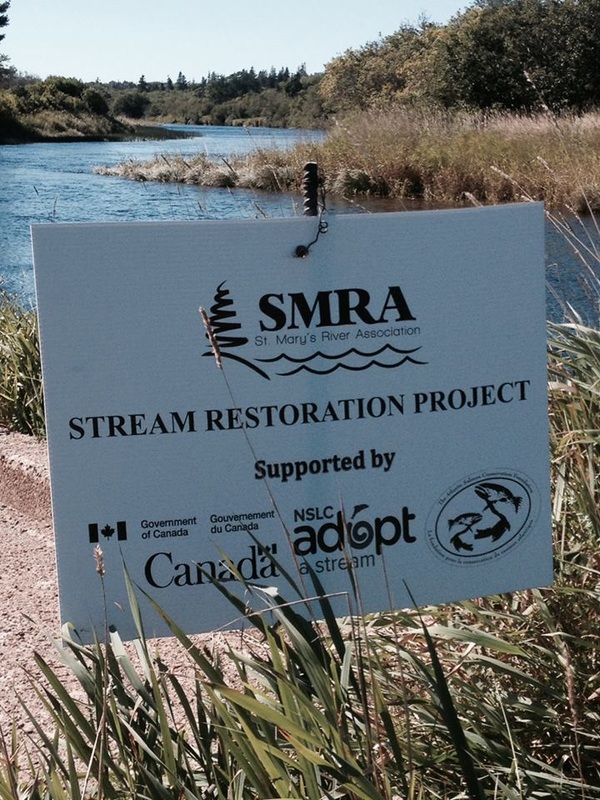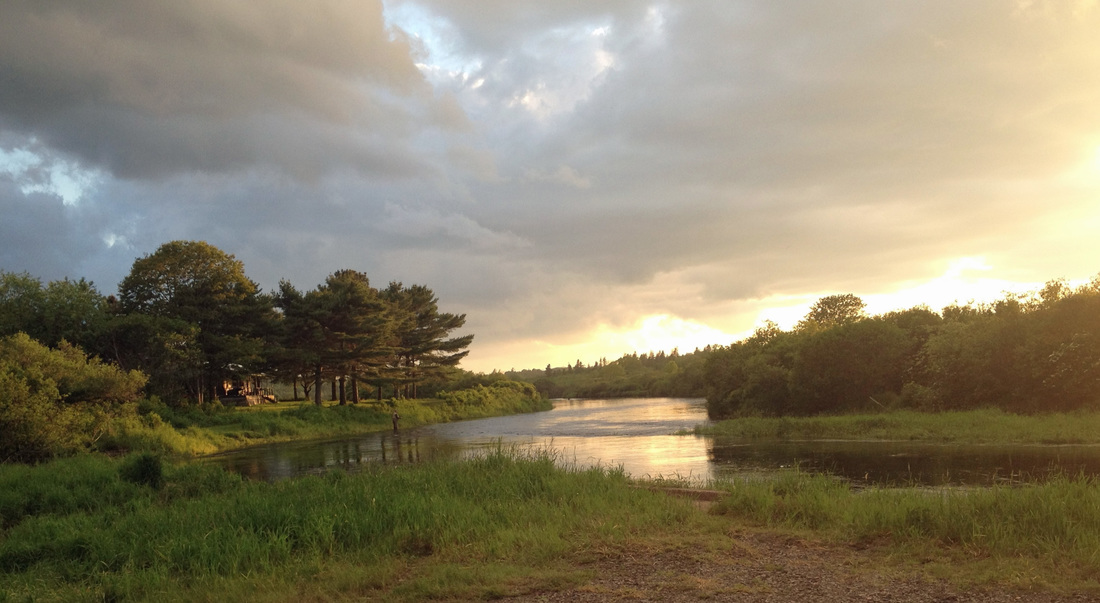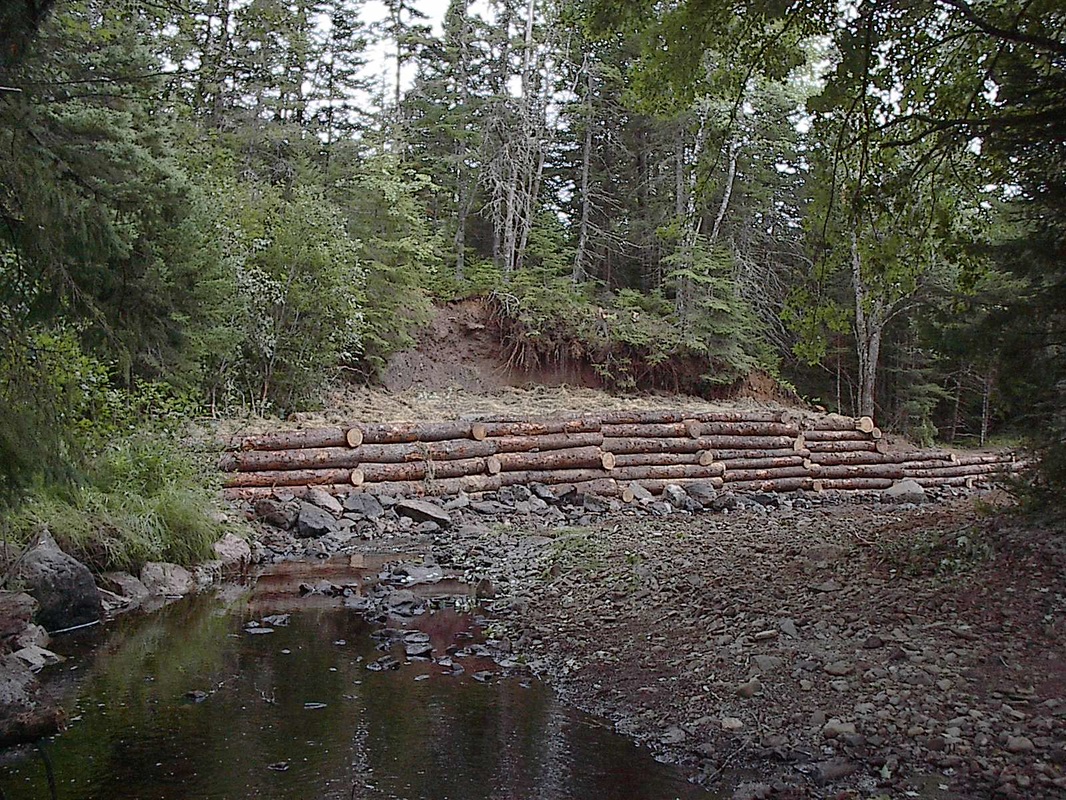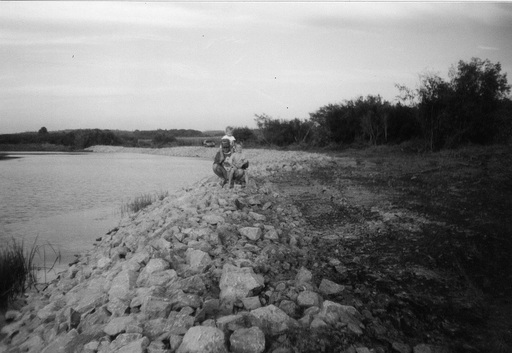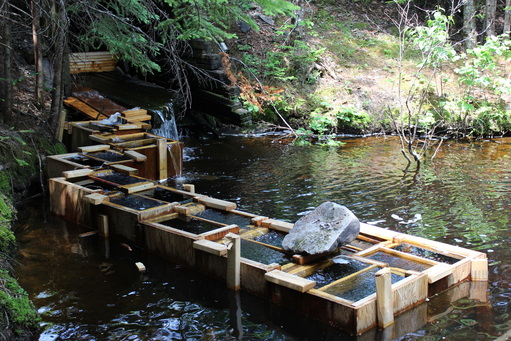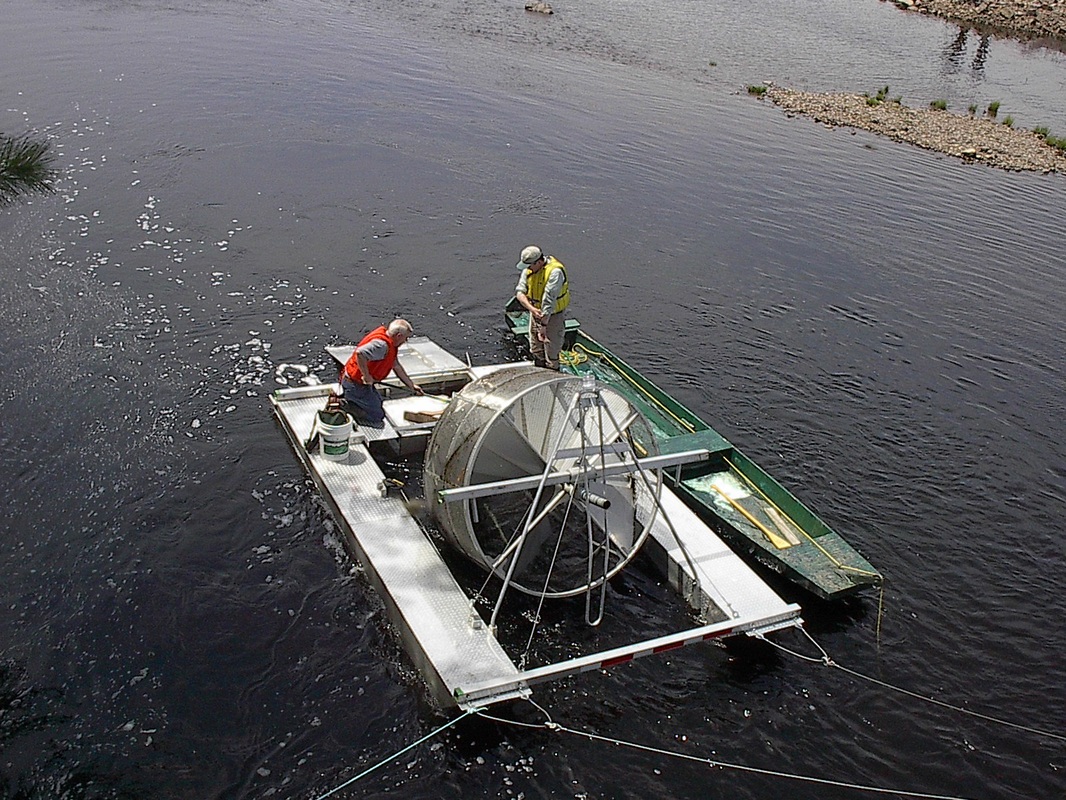|
PROJECTS
Since 1979, The St. Mary's River Association has worked with several agencies and groups toward our vision, which is “Health for the St. Mary’s River, the Atlantic salmon and our community”. Here’s some of our principal projects: 2021 W.A.T.E.R. Project with NS Salmon Association The W.A.T.E.R. project is a large-scale, four-year project funded by DFO’s Canada Nature Fund. The overarching goal of the project is to implement aquatic habitat restoration across Nova Scotia, supported by both regional planning and local action. The St. Mary’s has been chosen as one of the priority rivers in the Southern Uplands Region. The program will develop regional, watershed-level plans to guide restoration efforts to help improve the quality of aquatic habitat, with a focus on three key species at risk in the St. Mary`s watershed: Atlantic Salmon, American Eel, and Brook Floater Mussel. The watershed plans, once completed, will outline prioritized and cost-effective local, on-the-ground restoration action. 2021 Tracking Project with Dept of Fisheries and Oceans (DFO) This initiative is led by DFO Newfoundland and funded by the Environmental Studies Research Fund. St. Mary’s Atlantic salmon have been chosen to be part of a large-scale tracking project. The goal is to track salmon further out at sea with particular emphasis on whether salmon are coming in close proximity to oil and gas exploration sites. SMRA will be angling for 25 to 30 Atlantic salmon during the month of April. You may see folks, who have a special licence, angling during this time. SMRA will capture the fish and a DFO biologist will perform surgery inserting small transmitters. 2021 Wood Turtle Project This initiative will very much resemble the Clean Annapolis River Project`s (CARP) wood turtle project which has been running for eight years. Our inaugural year will consist of two components - active, in-field surveys; and engaging the general membership and public for education and to capture adhoc observations by the larger public. What do I do when I see a wood turtle? 2020 - 2022 Museum Upgrade Our Interpretive Centre is Sherbrooke, N.S. is celebrating it's 20th year of being open on July 1st, 2021. The museum committee are working on new and upgraded displays, an enhanced gift shop offering and some infrastructure upgrades. Please drop by this summer to see what we have been doing! 2020 Canadian Heritage River System (CHRS) With funding from CLARI through St. F. X. University, the St. Mary's River Association initiated an investigation into the possibility of the St. Mary's River being designated a Canadian "heritage river". More information is available at CHRS. 2019 - 2021 Coastal Restoration Fund This project plans to continue Atlantic salmon recovery efforts in the St. Mary’s River by addressing the degradation of water chemistry and fish habitat through proven restoration techniques. Physical habitat degradation will be addressed through the installation of in stream structures and riparian zone reforestation. Water chemistry will be improved through the aerial application of lime to a selected trial site within the West Branch of St. Mary’s watershed. Monitoring will be conducted throughout the restoration sites to determine the efficacy of these approaches as tools for the recovery of the Southern Uplands Atlantic salmon designated population. West Branch Habitat Restoration (MacInnis) 2017 Drone Video - West River St. Mary's Habitat Restoration 2016 Riverside Data Loggers 2016 Thanks to partner Michelin Tire, we now have two data loggers, one on the East River St. Mary's & one on the West Branch. They provide real-time & historical data from monitoring of rainfall, river pH, water level, & water temperature at these sites. This gives us valuable ecosystem health information and a baseline to assess future trends. Anyone interested can access the loggers online, but please have patience, knowing that they are being deployed in May, 2016. To access the loggers, click on:: SMRA Data Loggers SMRA Kelt video (Gweneth Boutilier, Ralph Jack) 2016 St. Mary's River Slideshow 2016 West Branch Habitat Restoration (MacInnis) 2015 West Branch Habitat Restoration (MacInnis) 2014 Problem Culverts (2013 - present) Improperly designed culverts can unnecessarily limit the watershed area available to fish. Tributaries provide cool comfort and important spawning areas for adults & protection for young fish to feed & grow. SMRA volunteers built & installed structures that enable fish passage to tributaries where culverts had previously been barriers. Barrier free access for handicapped anglers to fish the St. Mary's River (1997-present) Development & maintenance of access to allow wheelchair-bound or other handicapped anglers the opportunity to fish the St. Mary’s River. Development of Watershed Project (2005-present) Following up on management plans from 1988 and 1995, the Association has been working to update these plans and develop the infrastructure and funding to implement them. Land acquisition (2007- present) The St. Mary's River Association works with the Nova Scotia Nature Trust & Nova Scotia Government to acquire land along the river channel for long-term protection and management. Habitat restoration (1989-present) Riverbank stabilization of eroding banks has been conducted at various sites throughout the watershed for almost 30 years. This work has involved placement of large rock material using heavy machinery along stretches of eroding river-bank. Habitat restoration of smaller streams (particularly using digger logs) has been conducted since 1993 with increasing frequency. Liming project (1998) Approximately 50 tonnes of limestone cobble were deposited at two location within the St. Mary's River in order to assess the feasibility and effectiveness of liming the river to increase the low pH of the stream water . Abundance and ecology of wood turtles within the St. Mary's River watershed (2003-2007) Participating with Nova Scotia Department of Natural Resources and St. Francis Xavier University, the St. Mary's River Association assisted in a five year study of the wood turtle, a provincial species-at-risk, within the watershed. This research was aimed at determining the population size of the turtles within the watershed and to determine basic ecology and behaviour of the local population. River Specific Atlantic Salmon Management Plan (1985-1994) In 1985 the St. Mary's River Association proposed a river-specific Atlantic salmon management project as a pilot study for a river-specific approach to salmon management in Atlantic Canada. Such a management document was produced in 1988. The objective of this management plan was to "optimize Atlantic salmon from all segments of the St. Mary's River in order to provide all user groups with maximum benefits." This program required research and monitoring to obtain the information to meet the objective, but the principle funding source was removed in 1994 and the project changed to become a community-based management plan renamed as the St. Mary's River Resource Management Model. This plan built on the objectives and information derived from the previous River Specific Atlantic Salmon Management Plan from 1988. The objective of the St. Mary's River Resource Management Model was "to develop a management plan for the St. Mary's River to achieve the maximum sustainable benefit from the fisheries resource, based upon information that is specific to the river, and upon a system of decision-making that is shared between members of the local community, user groups and government agencies". Within this project the St. Mary's River Association collaborated with the Department of Fisheries and Oceans, often carrying the costs, to conduct research and monitoring on Atlantic salmon of the river, in the context of river-specific management. The results of this 1985-1995 river management work was a management strategy, detailed fisheries management plan, and a blueprint for community-based management plan. St. Mary's River Forestry/Wildlife Project (1984-1992) This was a joint initiative of federal and provincial governments, Stora Forest Industries, Scott Maritimes Ltd., Canadian Institute of Forestry, and St. Mary's River Association. The objective of this project was to develop methods to manage forestry and wildlife together. Participating groups conducted joint studies and operational trials to develop practical and effective guidelines and procedures to be used in the planning and operations of forest management. Salmon enhancement (1989) Members of the St. Mary's River Associated collected broodstock and participated in juvenile releases into the river of hatchery raised salmon. Dependency Survey (1988) Hurley Fisheries Consulting was retained by St. Mary's River Association to conduct a survey of the uses by people of the St. Mary's River. The study was intended as an examination of the socio-economic relationships of residents and visitors to the river. The results provided baseline data for the development of a river-specific management plan for salmon stocks and so was part of the above River Specific Atlantic Salmon Management Plan. Salmon enhancement (1981-1982) A streamside incubator and semi-natural rearing pond was used to enhance the survival of juvenile Atlantic salmon from the egg to parr stage. Approximately 50,000 eggs were incubated and juveniles reared and later release. As part of this program, the St. Mary's River Association collaborated with the Department of Fisheries and Oceans to enforce fishery regulations and surveillance for poachers. In addition to these projects, the St. Mary's River Association has worked since their inception with federal and provincial fisheries agencies on management issues and required data collection for appropriate management. Management issues include determining annual fisheries regulations and required assessment research to determine conservation and allocation requirements. As part of the required data collection the Association has always been a principal player in the sampling of juvenile, smolt, and adult Atlantic salmon within the St. Mary's River. Smolt Wheel 2016
DFO & SMRA volunteers installed a Smolt wheel at Glenelg Bridge, West River St. Mary's in April, 2016. We hope to capture & save about 300 smolts for live gene banking. These smolts will be raised to adults, then spawned & put back in the river, or released just prior to naturally spawning, depending on conditions. Click here to see wheel in operation: Smolt Wheel 2016 |
Riverbank tree planting volunteers - 2016
Riverside Data Logger May, 2016Top - Scott Beaver transfers a St. Mary's salmon kelt to a holding tank in 2016.
Bottom - Allan MacDonald & Sandy Barnhill working on the kelt project. MacKeen's Brook Pool, SMRA's barrier-free access for handicapped anglers. Featuring a gravelled access road & parking area, 2 concrete casting pads that can accommodate wheelchair anglers, and a wonderful view & feel of the gorgeous East River St. Mary's.
Top photo shows the completed Barren Brook, an important tributary of the West River St. Mary's, bank stabilization project in 2001. Bottom photo shows volunteer project leader Jack Duffy & grandchildren Patrick & Jolie. This 2004 project at the Cutbank pool on the East River St. Mary's stabilized 600' of riverbank with 160 truckloads of large rock at a cost of $19,927.00. Other SMRA project volunteers were Don Barnes & Paul d'Entremont.
SMRA volunteers built and installed this structure to facilitate fish passage to an important tributary of the St. Mary's River. Improperly designed culverts such as this one can unnecessarily limit the watershed area available to fish. Tributaries provide cool comfort and important spawning areas for adults & protection for young fish to feed & grow.
SMRA volunteers use a smolt wheel to assess the salmon smolt run below Silver's Bridge in spring 2002. Smolt were captured, marked, and released at an upstream location (mark-recapture), enabling a DFO biologist to estimate total smolt numbers.
|
|
St. Mary's River Association
8404 Hwy 7, PO Box 179, Sherbrooke NS, Canada B0J 3C0 Email: info@stmarysriverassociation.com Tel: (902) 522-2099 |
Copyright 2024

